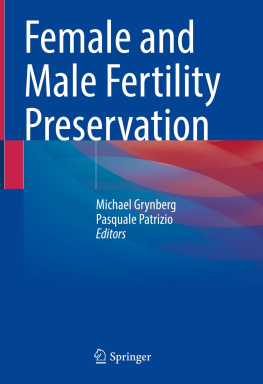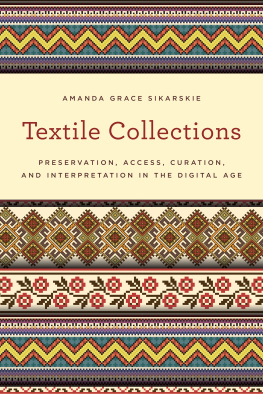Issues and Planning
Edited by
Paul N. Banks
and
Roberta Pilette



To the memory of
Carolyn Harris
Ix
CAROLYN CLARK MORROW
SARA R. WILLIAMS
CHRISTINE WARD
MARGARET CHILD, with the assistance of LAURA J. WORD
JUTTA REED-SCOTT
PETER S. GRAHAM
PAUL N. BANKS
DUANE A. WATSON
SALLY A. BUCHANAN
RICHARD STRASSBERG
ROBERTA PILETTE
CAROLYN HARRIS
JAN MERRILL-OLDHAM and NANCY CARLSON SCHROCK
JOHN F. DEAN
EILEEN F. USOVICZ and BARBARA LILLEY
ELEANORE STEWART
PAULA DE STEFANO
ELEANORE STEWART and PAUL N. BANKS
PAUL N. BANKS
Consultant. Formerly, senior lecturer, Preservation and Conservation Studies, Graduate School of Library and Information Science, the University of Texas at Austin; conservator and head, Conservation Department, the Newberry Library.
SALLY A. BUCHANAN
Associate professor, School of Information Science, the University of Pittsburgh. Formerly, chief, Preservation Department, Stanford University Libraries.
MARGARET CHILD
Retired consultant. Formerly, assistant director, Smithsonian Institution Libraries; head, Research Resource Programs, Division of Research Programs, National Endowment for the Humanities.
JOHN F. DEAN
Director, Preservation and Conservation, Cornell University Libraries. Formerly, head of Preservation, Johns Hopkins University Libraries; head of Bindery, the Newberry Library.
PAULA DE STEFANO
Barbara Goldsmith Curator for Preservation, New York University Libraries.
PETER S. GRAHAM
University Librarian, Syracuse University.
CAROLYN HARRIS
Until her death, director, Preservation and Conservation Studies, Graduate School of Library and Information Science, the University of Texas at Austin. Formerly, assistant director for Preservation, Columbia University Libraries.
BARBARA LILLEY
Conservation/Preservation program officer, New York State Program for the Conservation and Preservation of Library Research Materials, Division of Library Development, New York State Library
JAN MERRILL-OLDHAM
Malloy-Rabinowitz Preservation Librarian, Harvard University Library. Formerly, head of Preservation, University of Connecticut Libraries.
CAROLYN CLARK MORROW
Formerly, Malloy-Rabinowitz Preservation Librarian, Harvard University Library; assistant director, Preservation Directorate, the Library of Congress.
ROBERTA PILETTE
Associate chief, Preservation Treatment, Preservation Division, the New York Public Library. Formerly, senior lecturer, Preservation and Conservation Studies, Graduate School of Library and Information Science, the University of Texas at Austin.
JCITTA REED-SCOTT
Formerly, senior program officer for Preservation and Collections Services, Association of Research Libraries.
NANCY CARLSON SCHROCK
Chief collections conservator, Harvard College Library.
DON C. SKEMER
Curator of Manuscripts, Department of Rare Books and Special Collections, Princeton University Library.
ELEANORE STEWART
Formerly, head, Replacement and Reformatting, Preservation Department, Stanford University Libraries; head, Conservation Treatment, SUL.
RICHARD STRASSBERG
Kheel Director, Kheel Center for Labor-Management Documentation and Archives, Martin P. Catherwood Library, Cornell University.
EILEEN F. USOVICZ
Consultant. Formerly, operations manager, MAPS (now Preservation Resources).
CHRISTINE WARD
Chief, Archival Services, New York State Archives.
DUANE A. WATSON
Aaron and Clara Greenhut Rabinowitz Chief Librarian for Preservation, the New York Public Library, retired. Formerly, head of Preservation, the New-York Historical Society Library.
SARA R. WILLIAMS
Collections management coordinator, University of Tennessee, Knoxville, Libraries. Formerly, head, Preservation Department, University of Colorado-Boulder.
LAURA J. WORD
Senior program officer/administrator, Division of Preservation and Access, National Endowment for the Humanities.
Carolyn Harris entered the field of library preservation during what might be considered its early youth. As the preservation administrator of a major research library, as a preservation educator, and, at the time of her death in 1994, as director of the only full preservation and conservation education program in the United States, she contributed in countless and significant ways to the maturing of the field. It is a measure of her stature in library preservation that many of its ablest and most respected practitioners contributed chapters to Preservation: Issues and Planning, which Harris began planning in 1989. It is also remarkable that all the original authors were willing to update their chapters for publication, in some cases nearly ten years after they originally wrote them.
Early in the history of the book, Don Skemer Joined Carolyn Harris as co-editor. After her death, other responsibilities forced Skemer to relinquish his role in the work, but he has been consistently supportive of the efforts to bring the book to fruition. In 1996, the current editors took over the project, feeling that the book was too valuable to allow simply to disappear.
As institutional preservation programs multiplied and the field coalesced into a recognizable series of policies and procedures, preservation management replaced artifactual conservation as the leading edge of a growing movement. In the 1990s, a shift occurred toward concern with electronic and digital media, both as potential means of preservation and as forms of information that present formidable preservation challenges. Despite this current emphasis of the preservation field, traditional collections-both primarily artifactual and primarily informational-will continue not only to exist, but to dominate. Thus, effective library and archives preservation must now concern itself with three broad and overlapping areas: care of materials of artifactual value, preservation management of paper-based collections of primarily informational value, and the still largely uncharted management of information in new media. Preservation: Issues and Planning presents a balanced view of these three essential areas.
Preservation has often been called a technical problem requiring managerial solutions, and that is precisely the thesis of Preservation: Issues and Planning. The book will not tell you "how to do it right" but rather presents the issues that need to be considered within an institutional context. The professional requirement that every librarian and archivist understand preservation from a managerial perspective is regarded as far more important than knowledge of specific actions and techniques. Preservation must become an integral activity in every library and archives, managed by specialists but understood and supported by all.








